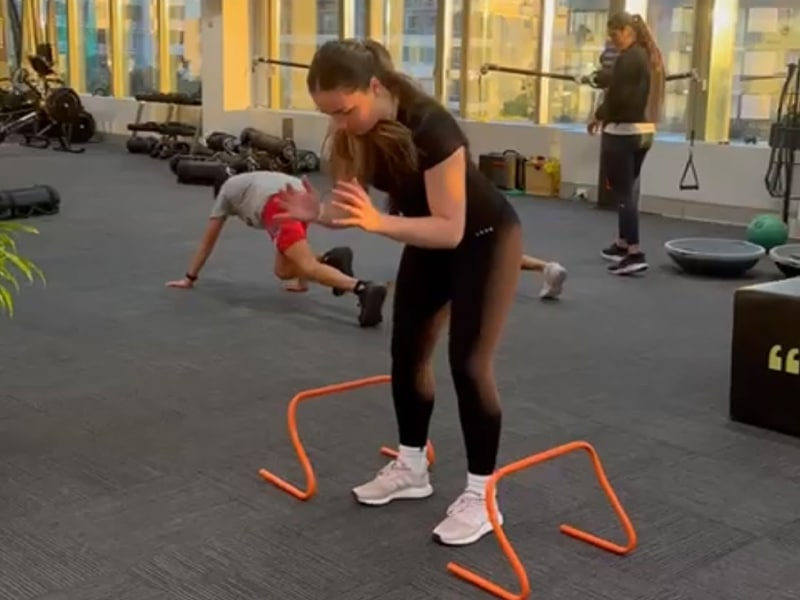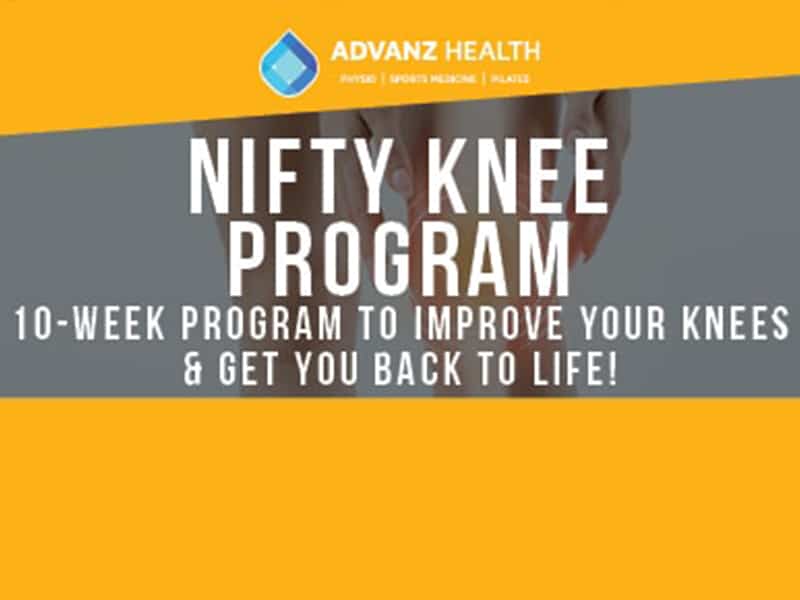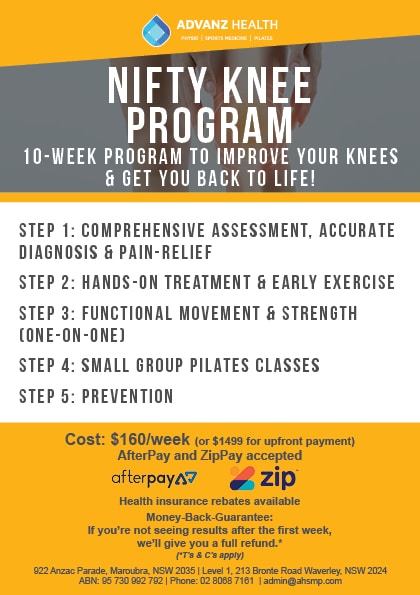At Advanz Health our team of physiotherapists, exercise physiologists and massage therapists are experts in treating knee pain. Our unique approach to fixing your knee pain includes:
- Comprehensive assessment to determine both the diagnosis and the root causes (we may use imaging/scans where necessary).
- Tests and measurements to ensure we monitor progress and improvements.
- Holistic view of your entire body, including posture, alignment, mobility, strength, sleep, stress, nutrition and your nervous system.
- Treatment plan that relieves pain and targets the root causes, including massage, joint manipulation, dry-needling, exercise programs (core strength, Pilates and movement retraining) and education. This plan will specifically target your individual goals.
- Ongoing prevention options through clinical Pilates and small-group exercise.
Our approach will get you better in the shortest timeframe and keep you better long-term. It is designed to make sure you avoid a life of pain and suffering that requires long-term therapy and lifestyle changes, and instead gets you back to doing the things you love with a strong body.
If you would prefer to have an initial physiotherapy appointment prior to committing to the NIFTY KNEE program, you can simply book an initial physiotherapy appointment online here, or call our reception to book on 8068 7161.




